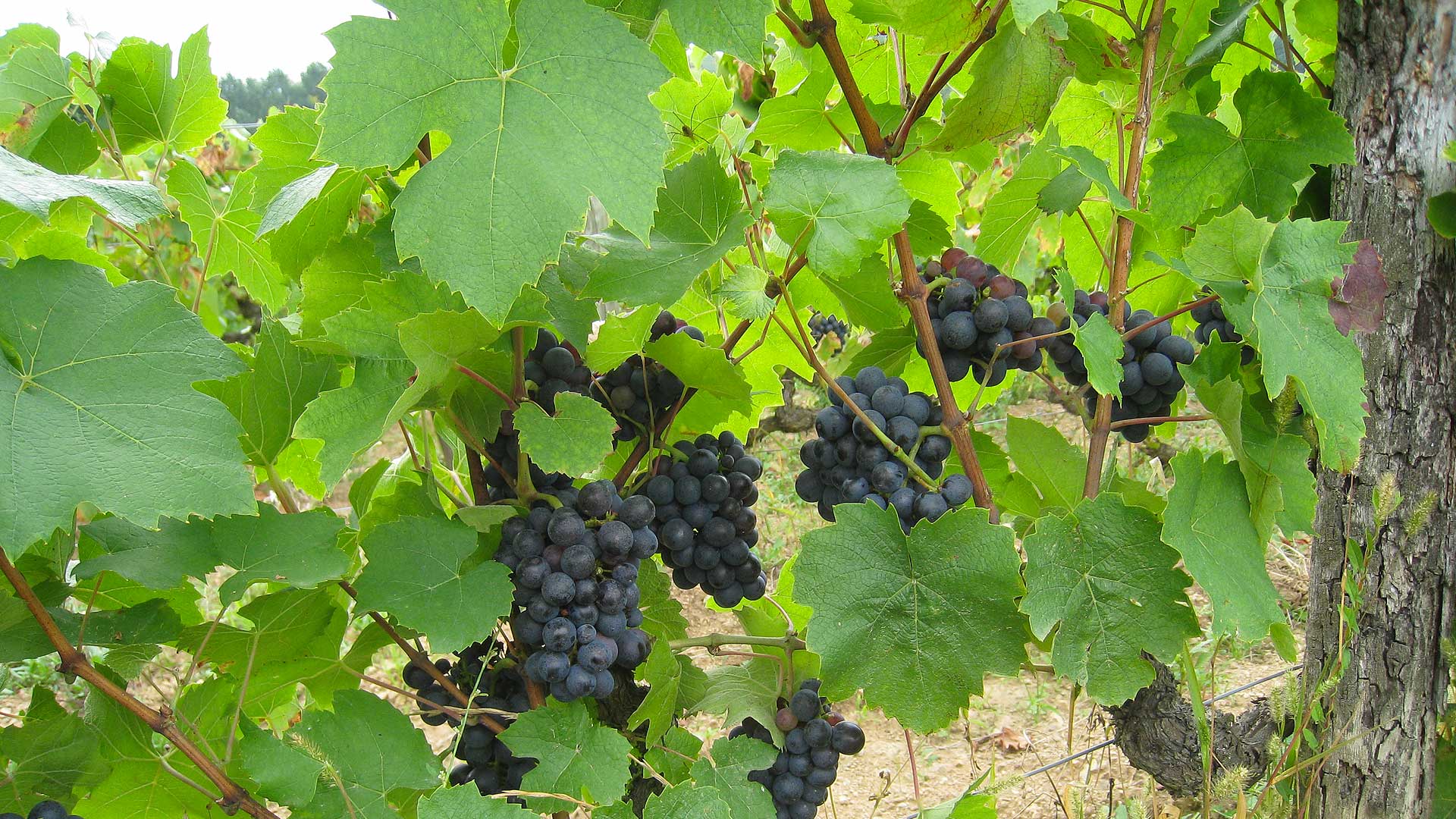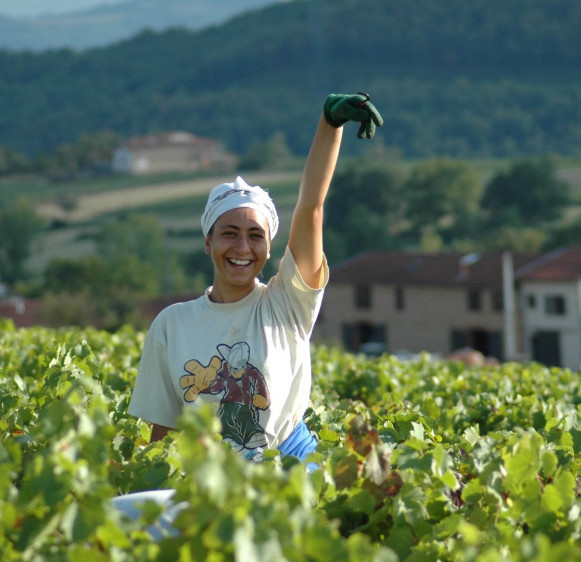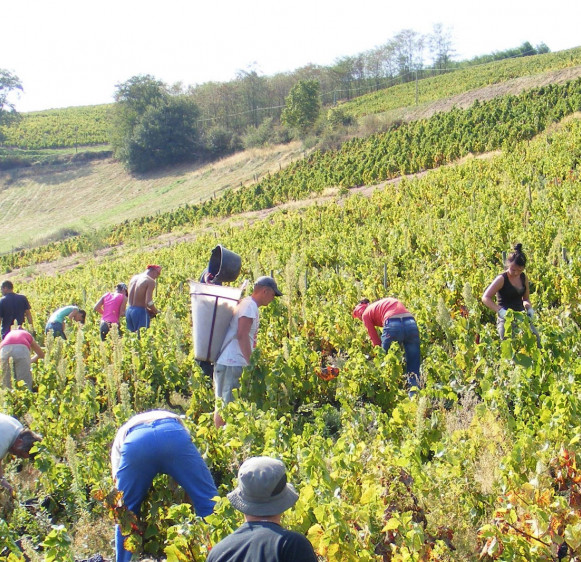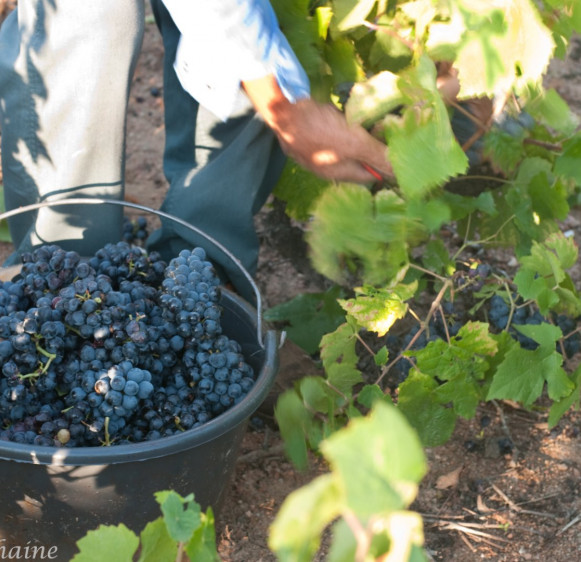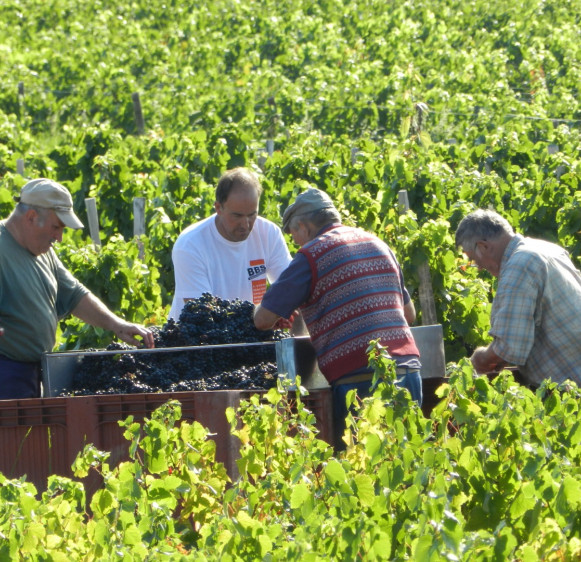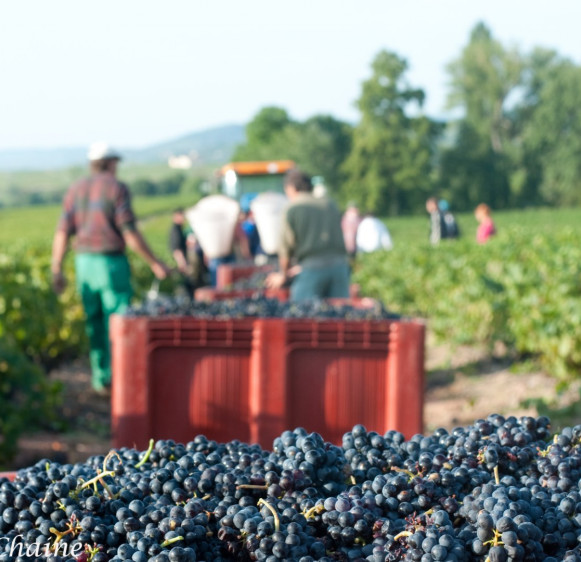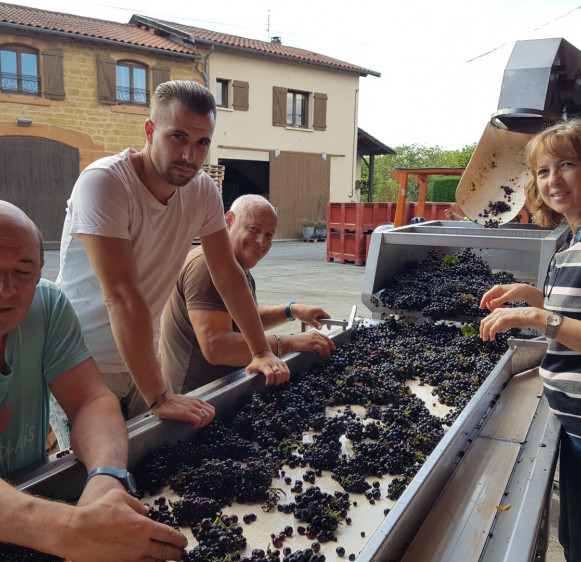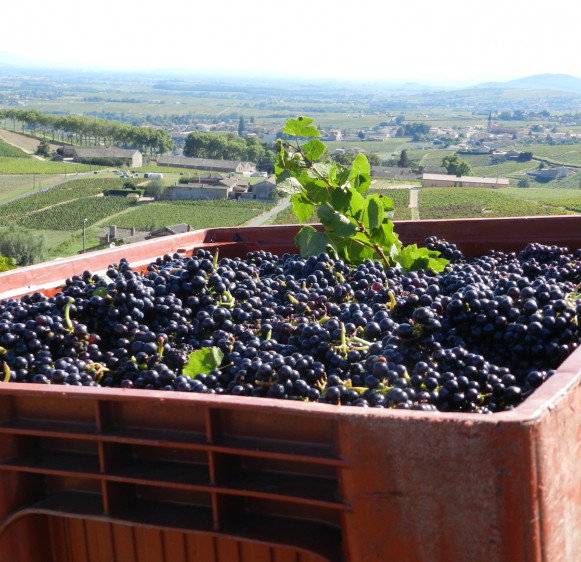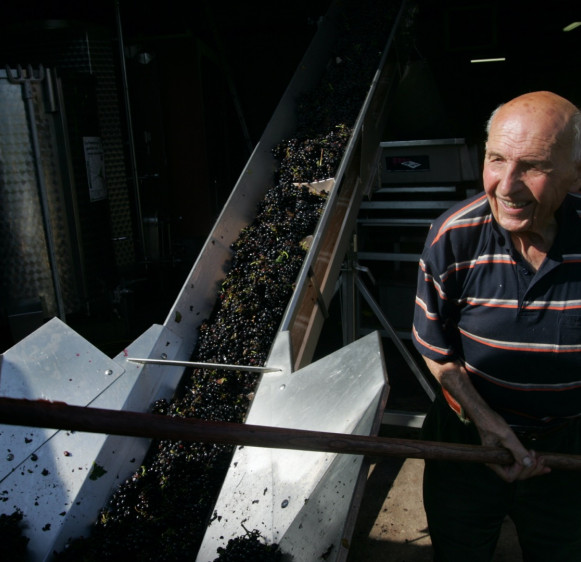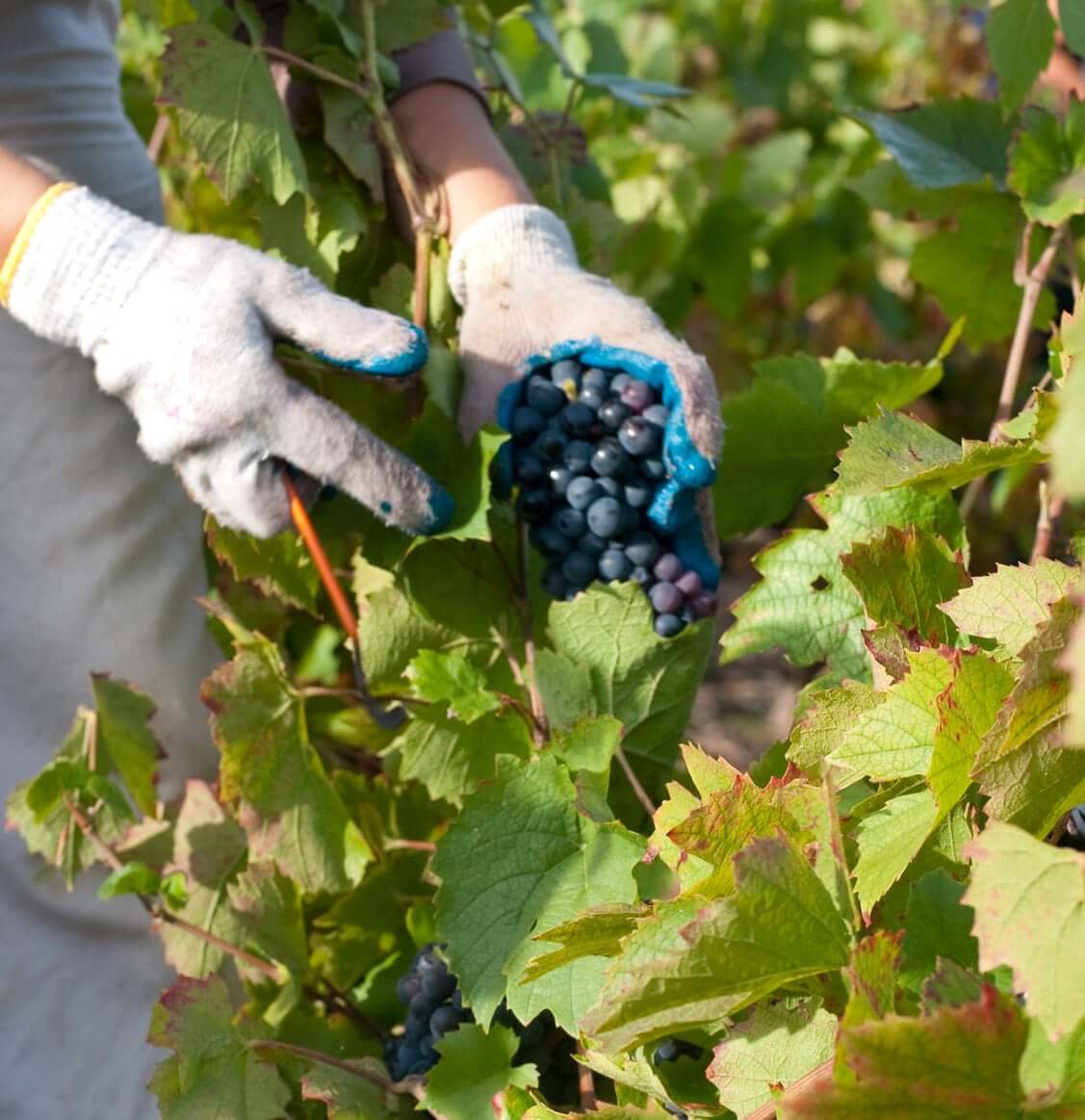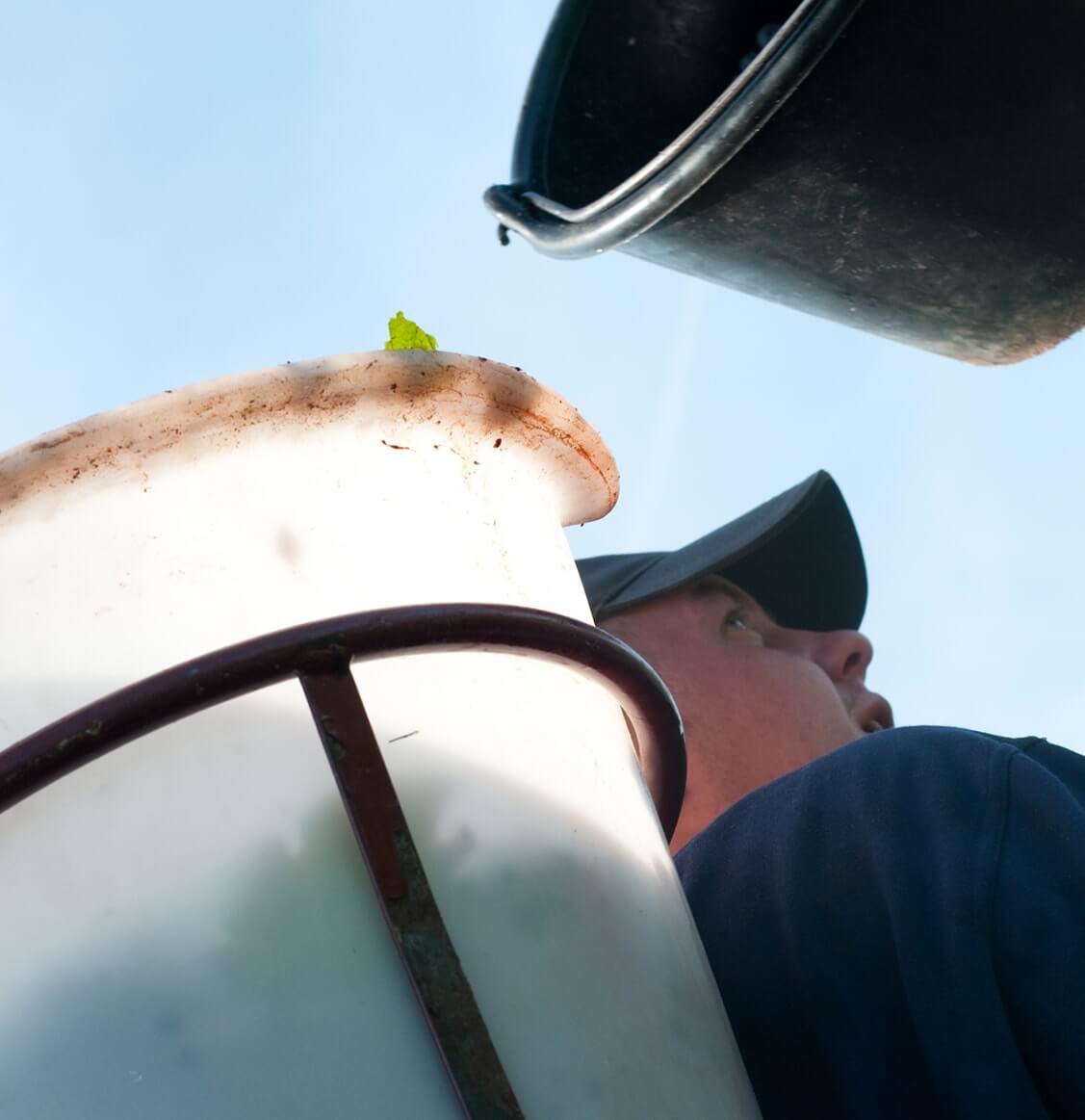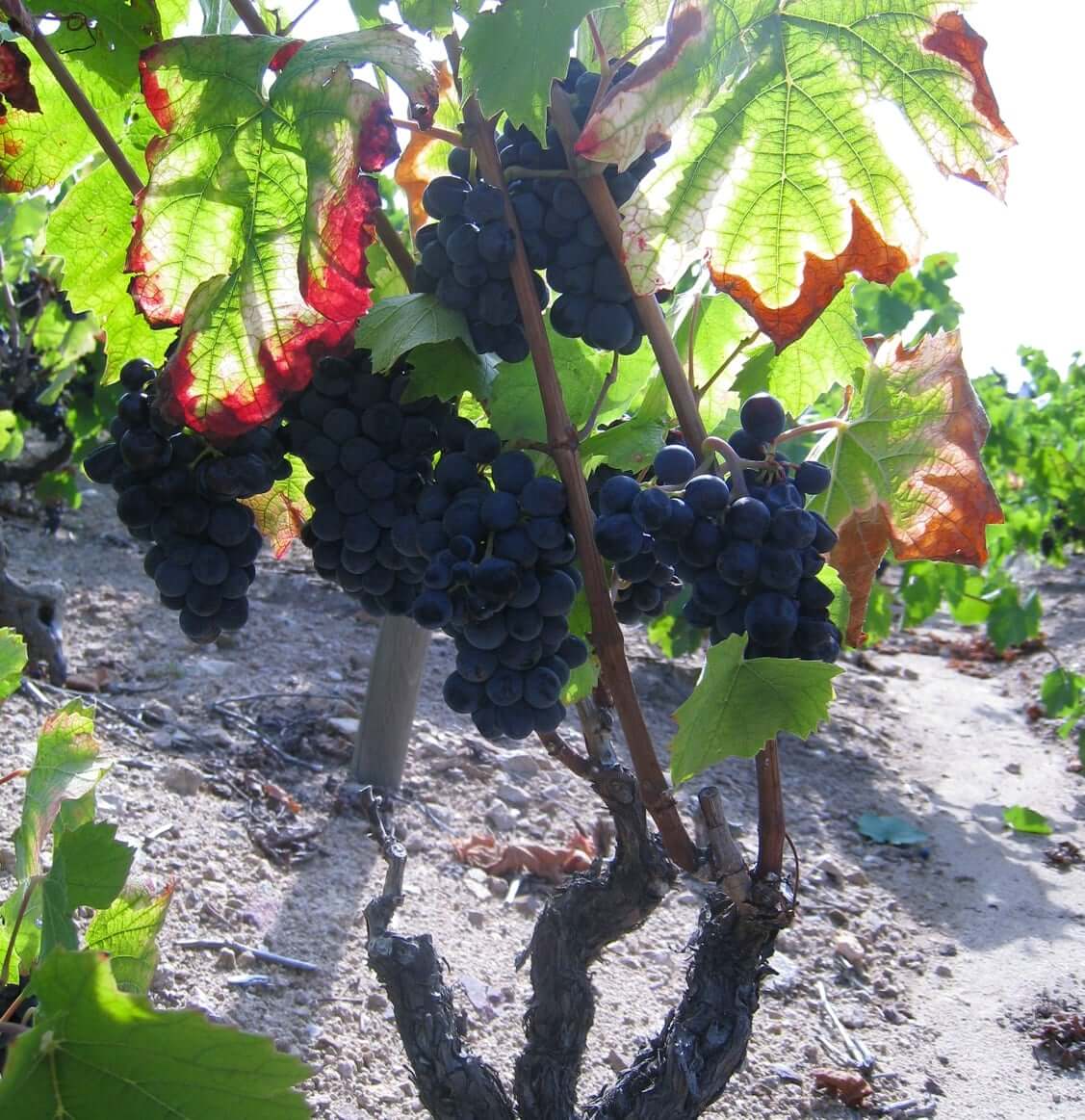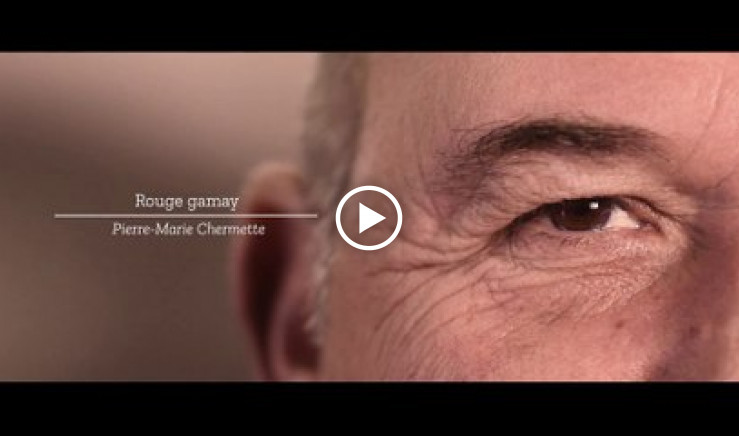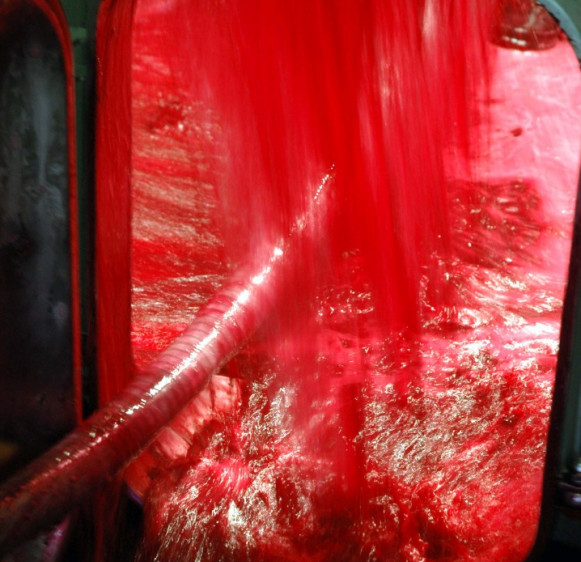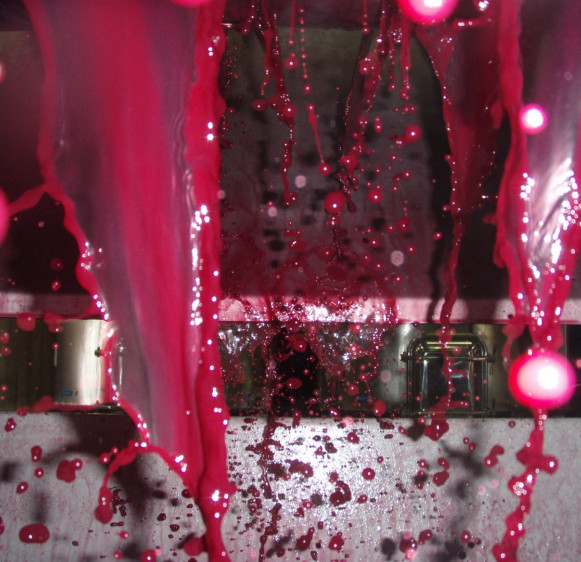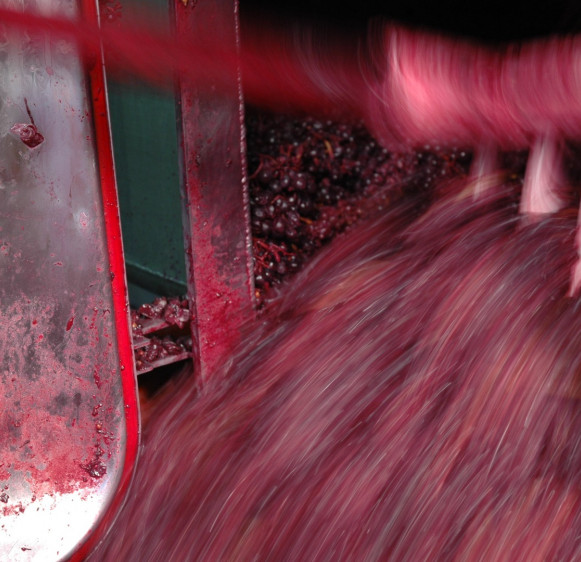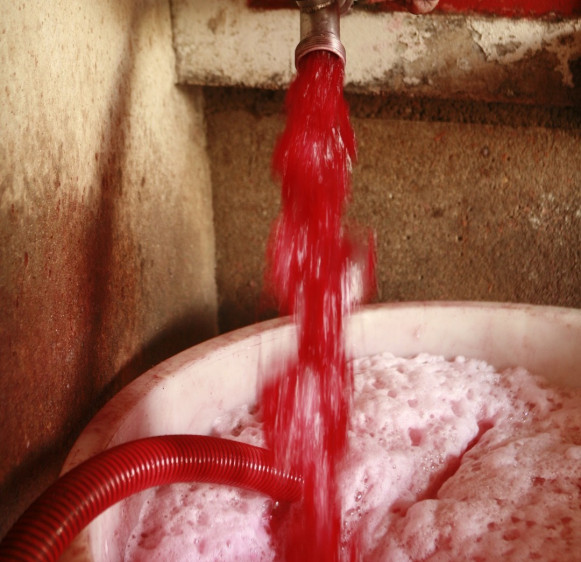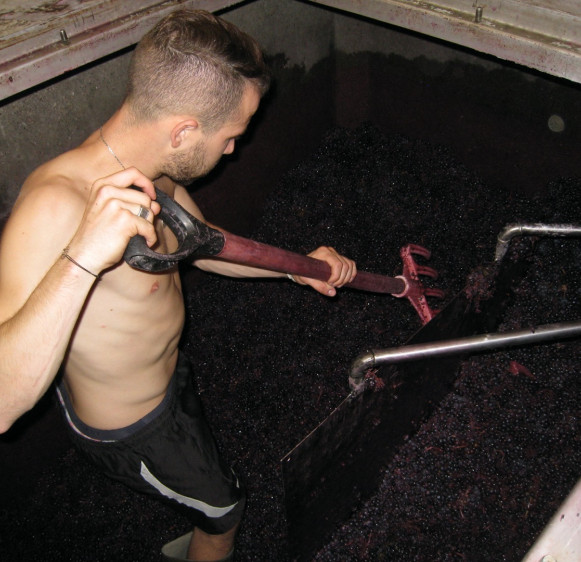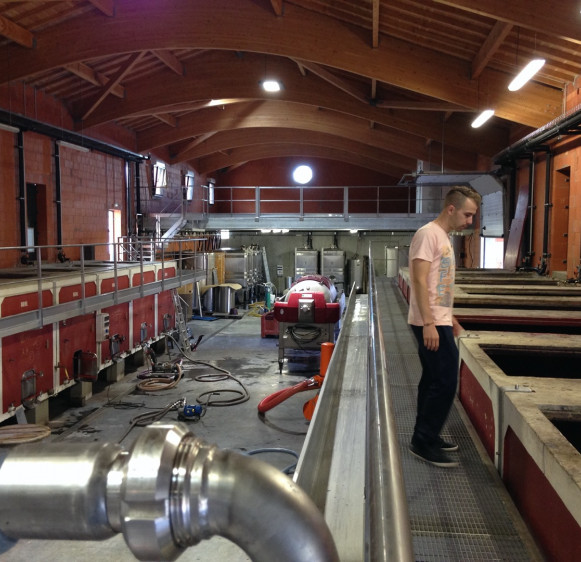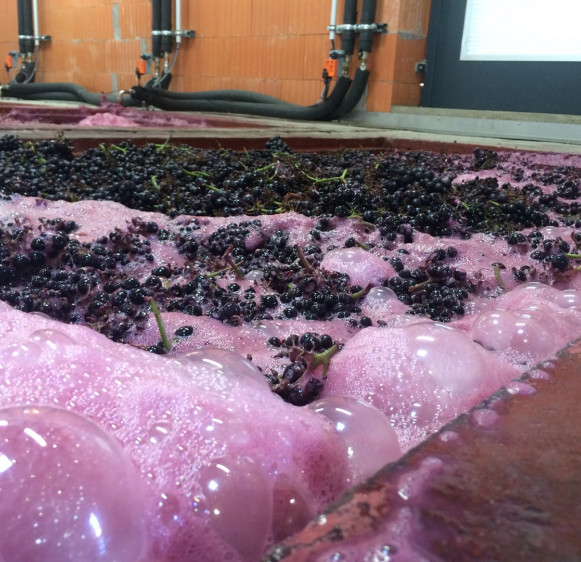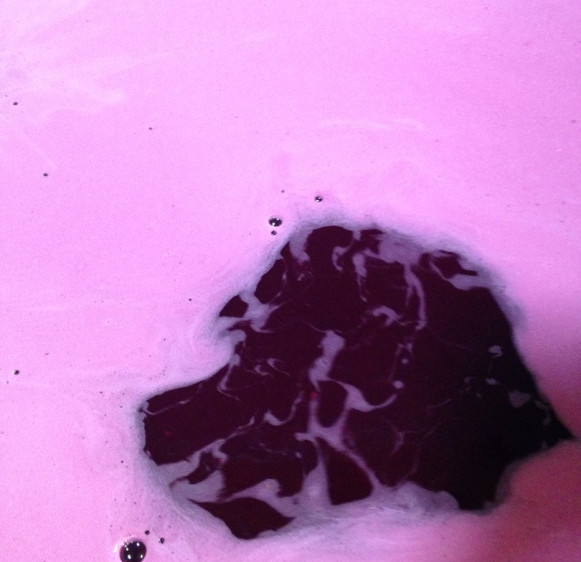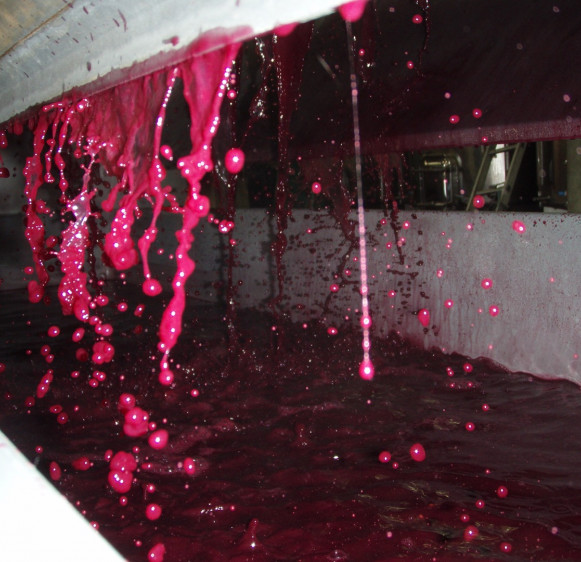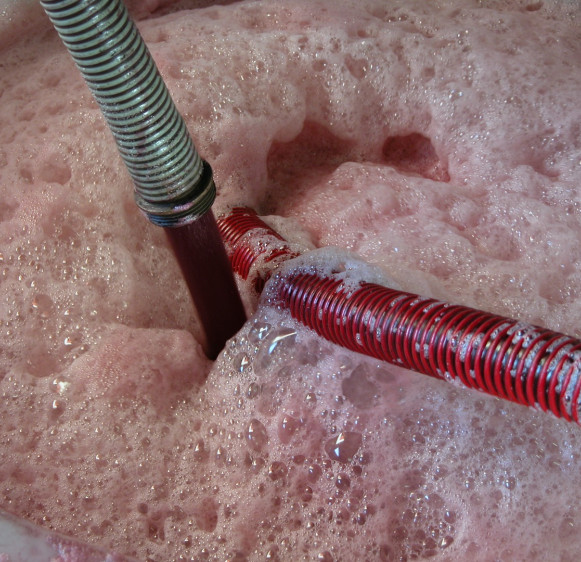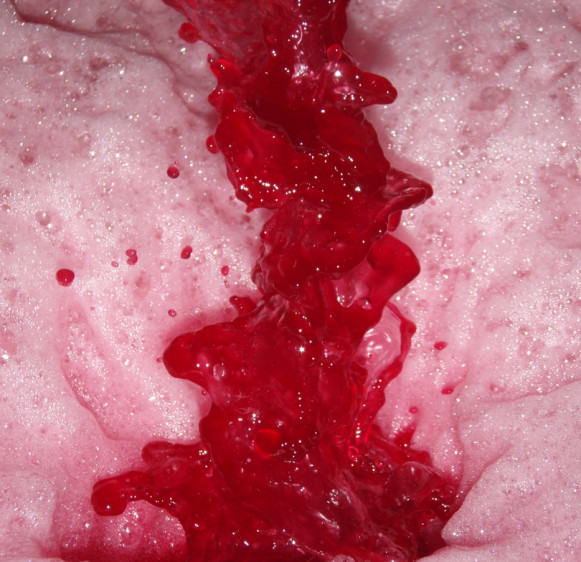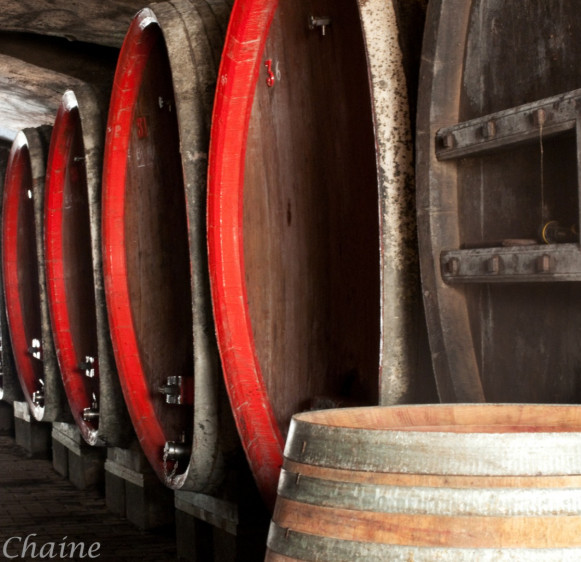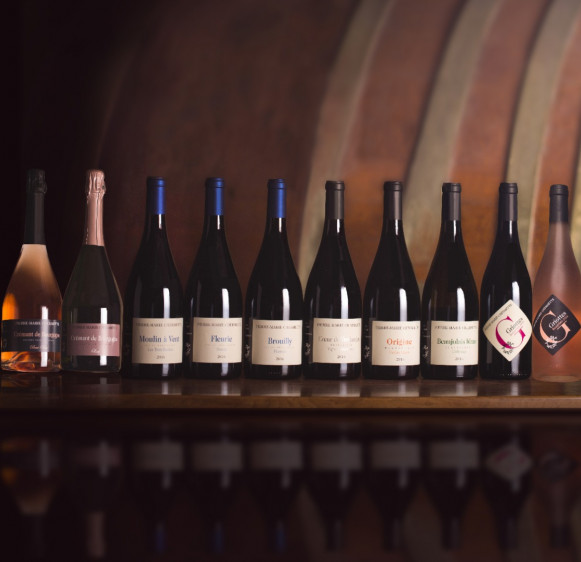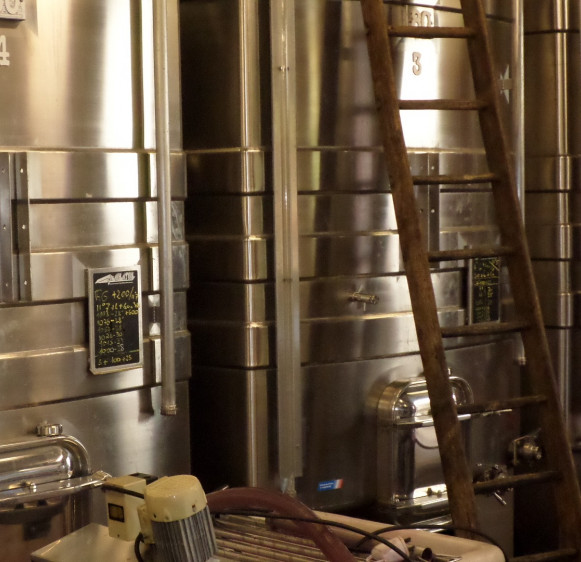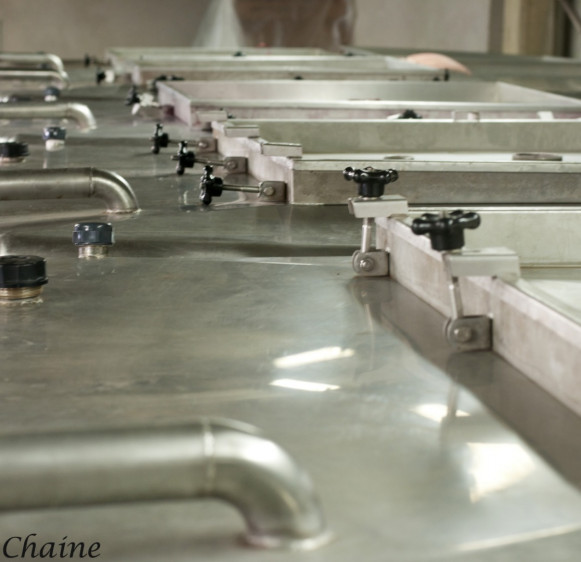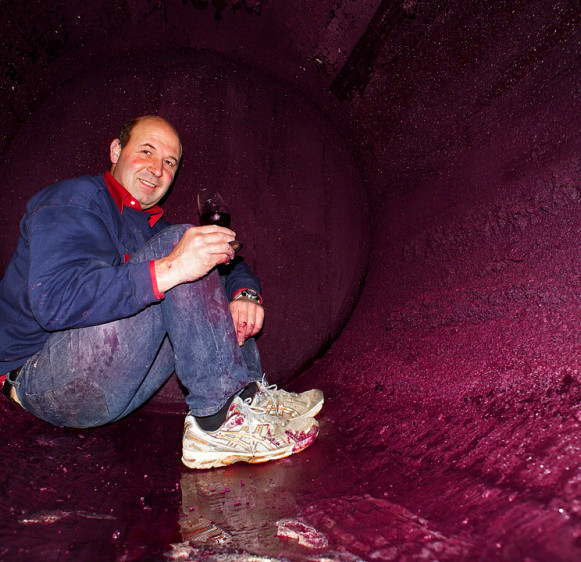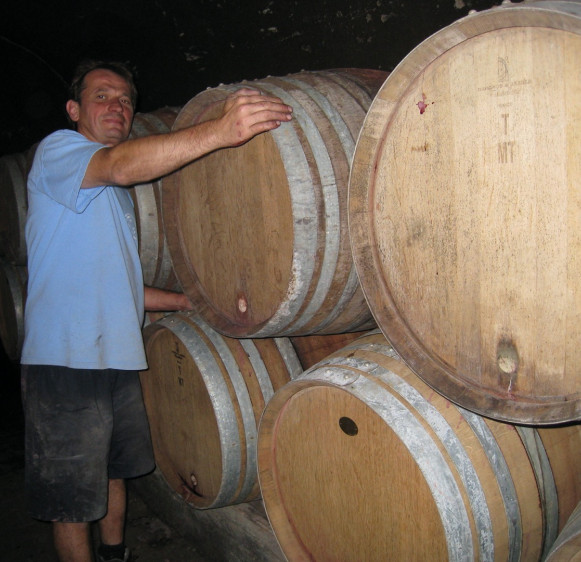The Harvest
We are always waiting for the optimal maturity to fix the date of the harvest thanks to the numerous monitoring of maturity in the plots. We notice that it is getting earlier and earlier.
This is always done manually, in order to preserve the integrity of the cluster, remove the leaves and pre-selection of grapes.
After the transport of the harvest to the vat, a passage on the sorting table can be carried out if necessary by our team in order to keep only the best.
Vinification Traditional and natural vinification
This is the traditional Beaujolais vinification practiced by our ancestors. We apply the semi-carbonic vinification method because it is perfectly suited to Gamay and our terroir. Elle nous permet d’obtenir la fraîcheur du fruit et la finesse des tanins.
We make our wine without chemical yeasts, only with the support of the natural yeasts on the grape. We do not chaptalize, that is to say that we do not add sugar during the maceration of the grapes and that the alcoholic degree is obtained naturally with the sugar contained in the fruits. The addition of sulfite, necessary for the conservation of wine, is as little as possible.
the video saga of the Beaujolais wine webdoc
Semi-carbonic vinification
The whole clusters - not destemmed - go into the tank; the tank is then saturated with carbon dioxide and closed. After 2 to 3 days of maceration, the cellar team makes "pumping over" in the morning and in the evening: the juice from the bottom of the tank is pumped and poured over the top. The goal is to give color and structure to the wine with supple and silky tannins.
Maceration lasts 4 to 6 days for the Beaujolais Nouveau, 5 to 7 days for the Beaujolais du printemps and 10 to 12 days for the crus. Then the grapes are pressed in the pneumatic press.
Aging Our wines are aged in five different containers.
Barrel ageing enters in a minority way in certain cuvées, such as Beaujolais Cœur de Vendanges, Fleurie les Garants and Moulin-à-Vent les Trois Roches. Moulin-à-Vent La Rochelle is aged 100% in oak barrels. 10% of the Beaujolais Blanc is vinified in acacia barrels. This originality gives it notes of honey and white flowers.

Oak casks
Our old oak casks of 40 to 55 hectoliters allow micro-oxygenation. This way we round the tannins in the wine and fix the color through an exchange between oxygen and the two wine compounds, tannins and anthocyanins, through the walls of the casks. The tannins give structure to the wine and the anthocyanins the color. Oak brings suppleness and roundness to the wine.

Oak barrels
Our 228 liter oak barrels range from new to 7 years old. They give more structure to the wine thanks to the contribution of tannins naturally present in the wood. They also round off the tannins in the wine and fix the color over time. This ageing process adds slightly woody and vanilla notes to the wines, while letting the fruit and roundness of the Gamay grape express themselves.

New acacia barrels
We made the original choice to acquire a few new 228 liter acacia barrels each year to age our white Beaujolais. This type of wood goes perfectly with Chardonnay. Acacia allows to produce fruity white wines with roundness and freshness. This aging gives the wine aromas of flowers, white flesh fruits and citrus fruits without “wooding” the wines.

Stainless steel tank
The stainless steel tank keeps the wines fresh and intensifies the aromas of red and black fruit from the Gamay.

Concrete tank
We use concrete vats, a traditional container that also helps to keep the wine fresh and fruity.
The cave
The wines are aged in the large oak casks of our beautiful vaulted cellar, built by the great-grandfather of Pierre-Marie Chermette in 1873. We have carefully maintained it to keep it in its original style. Oak casks require regular monitoring by our accredited cooper Thierry Chapuis, the last cooper in Beaujolais.
